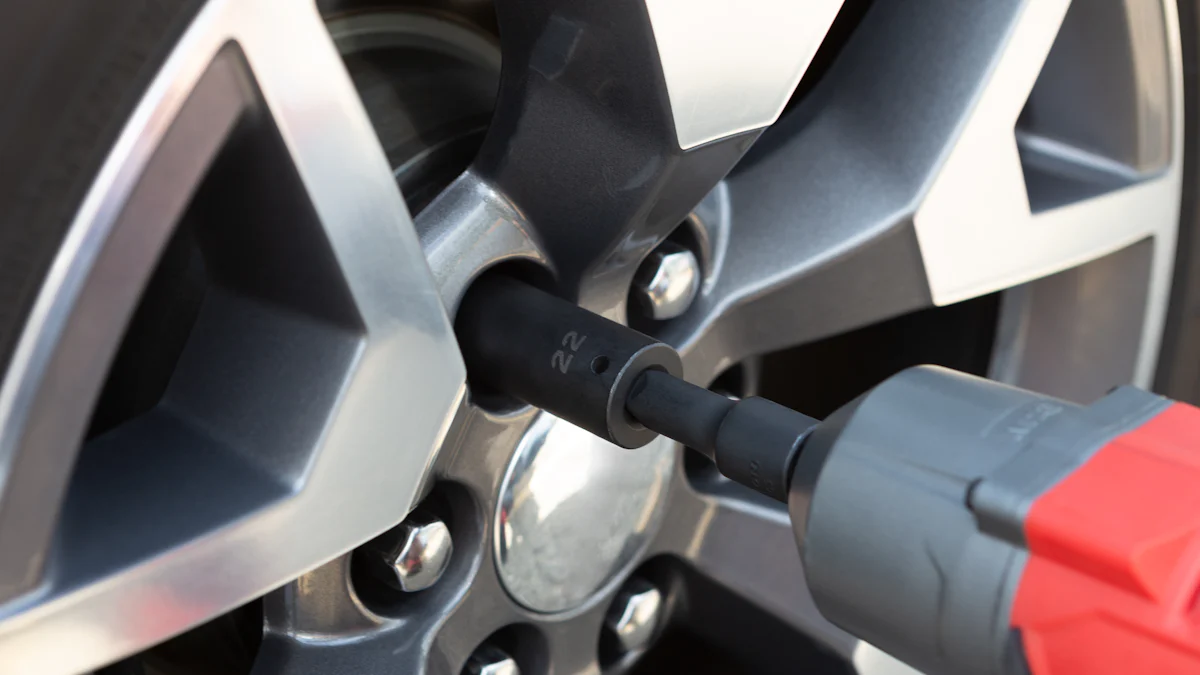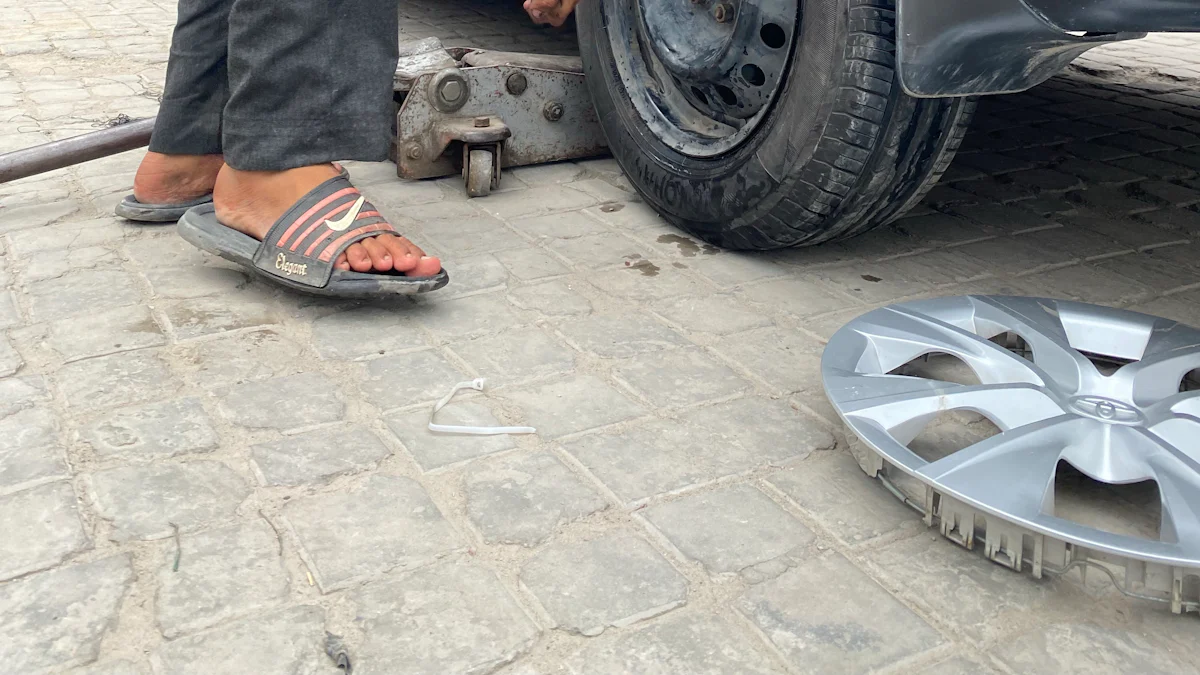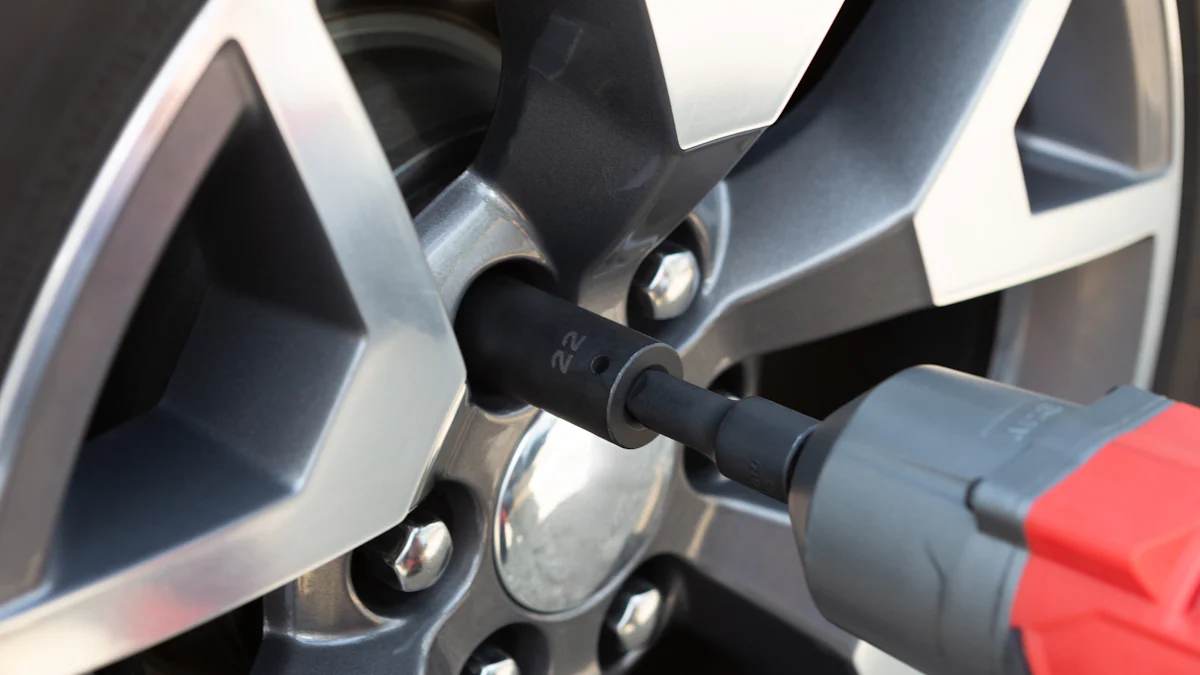
Using a lug nut wrench correctly holds significant importance for vehicle safety. Improper use can lead to severe consequences, such as wheel loss accidents. Observational data from wheel loss incidents highlight that kerbing or an out-of-calibration torque wrench often causes these accidents. Proper torque application with a torque wrench is crucial to avoid risks. Full tightening should be done as recommended by the vehicle manufacturer. Neglecting wheel problems can escalate into serious issues. For instance, a driver experienced a wheel coming off on the highway due to improper torquing of nuts.
Understanding the Lug Nut Wrench
Types of Lug Nut Wrenches
Standard Lug Wrench
A standard lug wrench is a basic tool found in many vehicles. It typically has an L-shape, providing leverage to loosen or tighten lug nuts. The simplicity and effectiveness make it a staple in emergency kits.
Cross Lug Wrench
A cross lug wrench offers more versatility. This wrench has a cross shape, allowing users to apply force from different angles. The design provides better leverage, making it easier to handle stubborn lug nuts.
Torque Wrench
A torque wrench ensures precise tightening of lug nuts. This tool measures the amount of torque applied, preventing over-tightening or under-tightening. Proper torque application is crucial for vehicle safety.
Components of a Lug Nut Wrench
Handle
The handle of a lug nut wrench provides the necessary leverage. A longer handle allows for greater force application, making it easier to loosen tight lug nuts.
Socket
The socket fits over the lug nut, ensuring a secure grip. Different wrenches come with various socket sizes to accommodate different lug nut dimensions. Some wrenches offer interchangeable sockets for added versatility.
Pivot Point
The pivot point in some wrenches, like the cross lug wrench, allows for better maneuverability. This feature helps in applying force from different angles, making the task more efficient.
Preparing to Use a Lug Nut Wrench
Safety Precautions
Wearing Protective Gear
Wearing protective gear ensures safety during the use of a lug nut wrench. Gloves protect hands from injuries and provide a better grip. Safety glasses shield eyes from debris or accidental slips. Sturdy footwear prevents foot injuries in case of dropped tools or parts.
Ensuring Vehicle Stability
Ensuring vehicle stability is crucial before using a lug nut wrench. Park the vehicle on a flat, stable surface to prevent movement. Engage the parking brake to secure the vehicle. Place wheel chocks behind the tires to add an extra layer of stability. According to Feng Elane, a car maintenance specialist, “Ensure that the vehicle is properly parked on a stable surface to prevent accidents and damage to the wheel and tire.”
Tools and Equipment Needed
Jack
A jack lifts the vehicle off the ground, allowing access to the wheels. Position the jack under the vehicle’s designated jacking points. Raise the vehicle until the tire is off the ground. Ensure the jack remains stable throughout the process. Industry experts emphasize the importance of using quality tools for reliability and precision.
Wheel Chocks
Wheel chocks prevent the vehicle from rolling while lifted. Place chocks behind the tires opposite to the one being worked on. This step ensures the vehicle remains stationary. Proper use of wheel chocks enhances safety during the task.
Gloves
Gloves protect hands from dirt, debris, and potential injuries. Choose gloves with a good grip to handle tools effectively. Wearing gloves also prevents blisters and improves comfort during the task. Mechanics recommend using gloves to avoid hand injuries and ensure a firm grip on the tools.
Step-by-Step Guide to Using a Lug Nut Wrench

Loosening the Lug Nuts
Positioning the Wrench
Position the lug nut wrench securely on the lug nut. Ensure the socket fits snugly over the nut. A proper fit prevents slipping and potential injury. Align the handle of the lug nut wrench horizontally for optimal leverage.
Applying Force
Apply force to the handle of the lug nut wrench in a counter-clockwise direction. Use body weight to assist in loosening tight lug nuts. Avoid sudden jerks to maintain control and prevent damage to the wrench or vehicle.
Lifting the Vehicle
Using the Jack
Place the jack under the vehicle’s designated jacking point. Raise the vehicle until the tire is off the ground. Ensure the jack remains stable throughout the process. A stable jack prevents accidents and ensures safety.
Ensuring Stability
Check the stability of the vehicle once lifted. Place wheel chocks behind the tires opposite to the one being worked on. This step ensures the vehicle remains stationary. Stability during this process is crucial for safety.
Removing the Lug Nuts
Turning the Wrench
Turn the lug nut wrench counter-clockwise to remove the lug nuts completely. Use steady, controlled movements to avoid stripping the nuts. Proper technique ensures the nuts come off smoothly.
Storing the Nuts
Store the removed lug nuts in a safe place. Use a container or a magnetic tray to keep them organized. Proper storage prevents loss and makes reinstallation easier.
Reinstalling the Lug Nuts
Hand-Tightening
Start by placing each lug nut back onto the wheel studs. Use your fingers to hand-tighten the nuts. Ensure each nut threads smoothly without cross-threading. Proper hand-tightening prevents damage to the threads and ensures a secure fit.
Using the Wrench
Once all lug nuts are hand-tightened, use the lug nut wrench to further secure them. Turn the wrench clockwise to tighten each nut. Apply even pressure to avoid over-tightening. Follow a star pattern when tightening the nuts. This method ensures even distribution of pressure across the wheel. Proper technique with the lug nut wrench maximizes safety and efficiency.
Lowering the Vehicle
Removing the Jack
After securing the lug nuts, lower the vehicle using the jack. Slowly release the jack to bring the vehicle back to the ground. Ensure the jack remains stable during this process. A controlled lowering prevents sudden movements that could damage the vehicle or cause injury.
Final Tightening
With the vehicle on the ground, perform a final tightening of the lug nuts. Use the lug nut wrench to ensure each nut is securely fastened. Apply the recommended torque as specified by the vehicle manufacturer. Proper torque application is crucial for vehicle safety. A torque wrench can help achieve precise tightening. This step ensures the wheels remain securely attached during driving.
Maintenance and Care of a Lug Nut Wrench

Proper maintenance and care of a lug nut wrench ensure its longevity and reliability. Regular cleaning and correct storage practices keep the tool in optimal condition.
Cleaning the Wrench
Removing Dirt and Debris
Regularly clean the lug nut wrench to remove dirt and debris. Use a cloth or brush to wipe down the handle and socket. Pay attention to crevices where grime can accumulate. Clean tools perform better and last longer.
Lubricating Moving Parts
Lubricate any moving parts of the lug nut wrench to ensure smooth operation. Apply a small amount of lubricant to the pivot points and joints. This practice prevents rust and reduces friction. Proper lubrication extends the life of the tool.
Storing the Wrench
Proper Storage Conditions
Store the lug nut wrench in a dry, cool place. Avoid exposing the tool to moisture, which can cause rust. Use a toolbox or storage case to protect the wrench from damage. Proper storage conditions maintain the tool’s functionality.
Avoiding Damage
Avoid dropping or mishandling the lug nut wrench. Impact can cause dents or misalignment, affecting performance. Handle the tool with care to prevent unnecessary wear and tear. A well-maintained wrench ensures safety and efficiency during use.
“After a career as a jet engine technician, I always properly maintain my tools. This is especially important for aluminum wheels,” shared a seasoned mechanic.
Regular maintenance and proper storage of a lug nut wrench are essential. These practices ensure the tool remains effective and safe for use.
Proper use of a lug nut wrench ensures vehicle safety. Key points include understanding different types of wrenches, preparing the vehicle, and following a step-by-step guide. Correct technique prevents accidents and maintains wheel integrity. Practicing with a lug nut wrench builds confidence and skill. Regular maintenance of tools extends their lifespan. Clean and store the lug nut wrench properly to ensure reliability. Consistent practice and care lead to safe and efficient vehicle maintenance.
See Also
Top Tips for Warm Winter with Soft Cozy Socks
Discovering Different Sock Options for Both Genders
